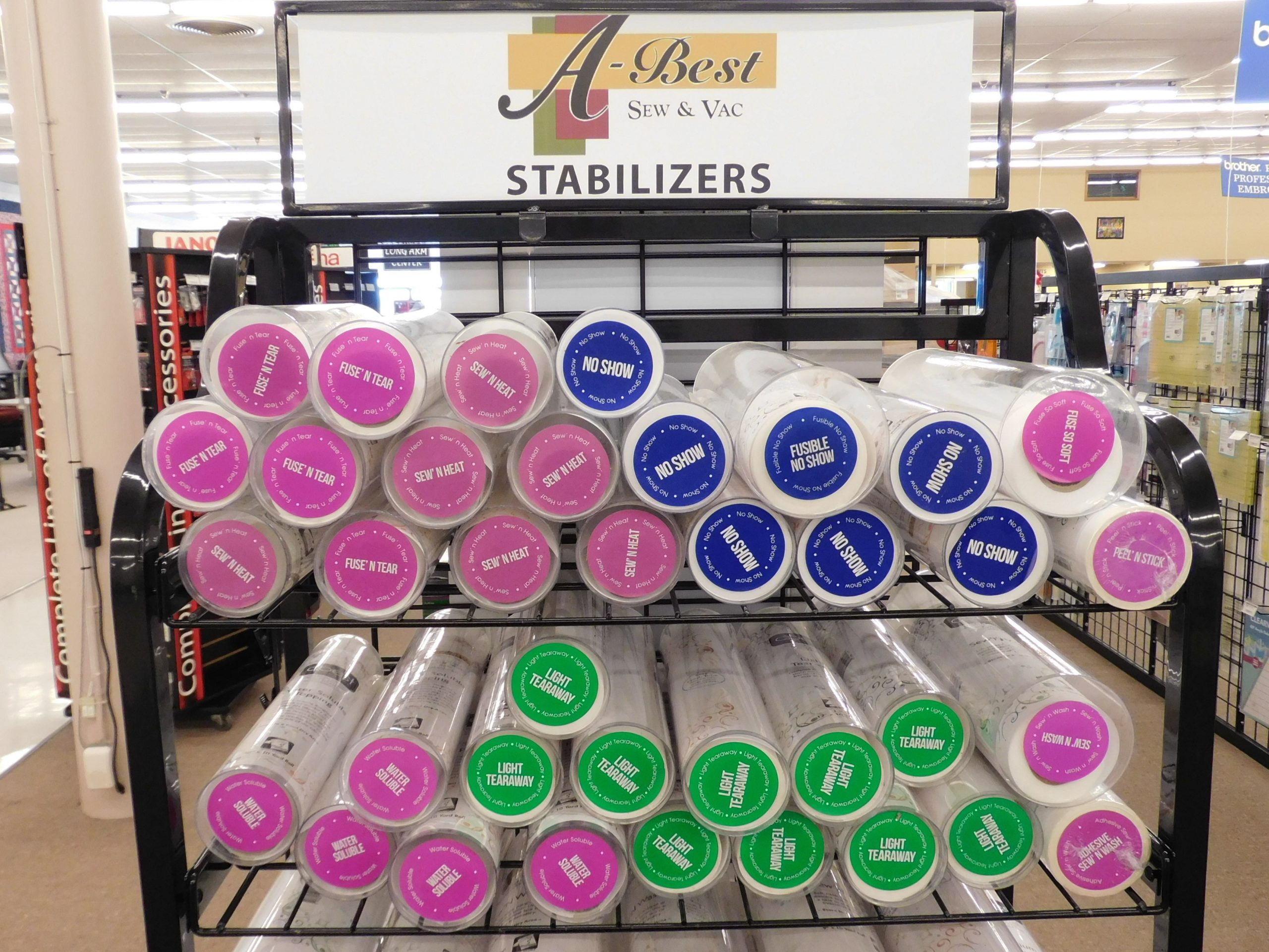Do you find yourself having to guess each time you are selecting thread for a new project? Do you struggle with shredding and breaking thread? Do your tensions always seem to need adjusting?
These are just a few of the problems that come from using the wrong thread in your sewing machine. In this edition of Tip of the Needle, we’re going to talk about about thread solutions – and how to choose the correct thread, so your machine is happy, your project is happy, and you’re happy.
The first thing to consider when purchasing thread is, “what is it made of?”. There are several materials that are most commonly used for thread, including cotton, polyester, rayon, and a few others. One thing you should never (and I mean never) run through your sewing machine is a blend. Blends tend to shred very easy and are related to a wide variety of sewing machine malfunction issues.
While there is a rare occasion that you may prefer to use rayon thread (i.e. for anything that would need to withstand heat), for 95% of your sewing projects you should use a polyester or cotton thread.
Cotton thread is a common choice for quilters because they use a lot of cotton materials. The theory here is that even though polyester may look identical to cotton, it will wear slower and leave holes in your cotton material. While this can happen, it doesn’t mean that it is always the best choice. So for traditional quilting, cotton is the thread of choice.
However, there are exceptions – especially if you plan to use a long-arm quilter. If you have a quilt that is pieced with cotton thread that you plan to take to a long-arm quilter, you probably aren’t aware that most of them will only use polyester thread. Cotton thread just doesn’t stand up well to the high speeds long-arm machines run. Still, the seams that are sewn with cotton will wear more evenly, and those do take a little more stress than the quilting.
As mentioned above, polyester is ideal for higher speeds. It is also stronger. Another benefit is that it tends to be less linty and, being made out of a synthetic, is less prone to shredding. For appropriate projects, polyester thread may limit shredding and reduce lint – protecting your sewing machine and project from a host of issues like tension problems, clogged feed dogs, broken needles, etc.
Of course the other thing to consider is brand. Each brand uses different manufacturing techniques and has different results when creating their thread – with various results. When choosing a brand be careful not to focus too much on price per spool. While “cheap” thread is usually less per spool, it can, and usually does cost more per yard than quality thread. Don’t ask me why, but that’s been my experience. Test quality brands and learn from your own experience what works best.
A good rule of thumb is this: Find a thread that your machine likes and stick to it.
At A-Best we sell only high- quality thread. For sewing we offer Madeira and Intressa threads. For embroidery we offer Floriani, DIME (Exquisite) and Madeira. For quilting, we recommend Madeira and Aurafil. While there are other good brands, we trust these manufacturers and the products they make.
So we’ve followed our own rule: Find a thread we like and stick with it. In the long run our customers are happier with their machines and projects when they use the correct thread.
Check back in May for our next Tip of the Needle!






